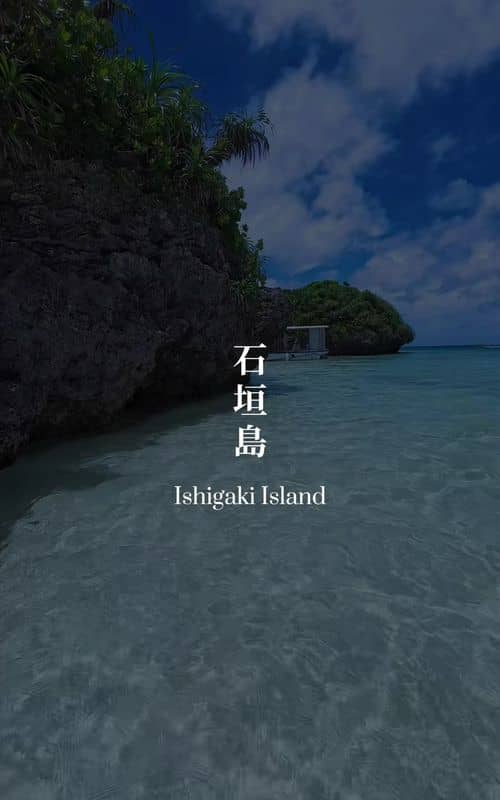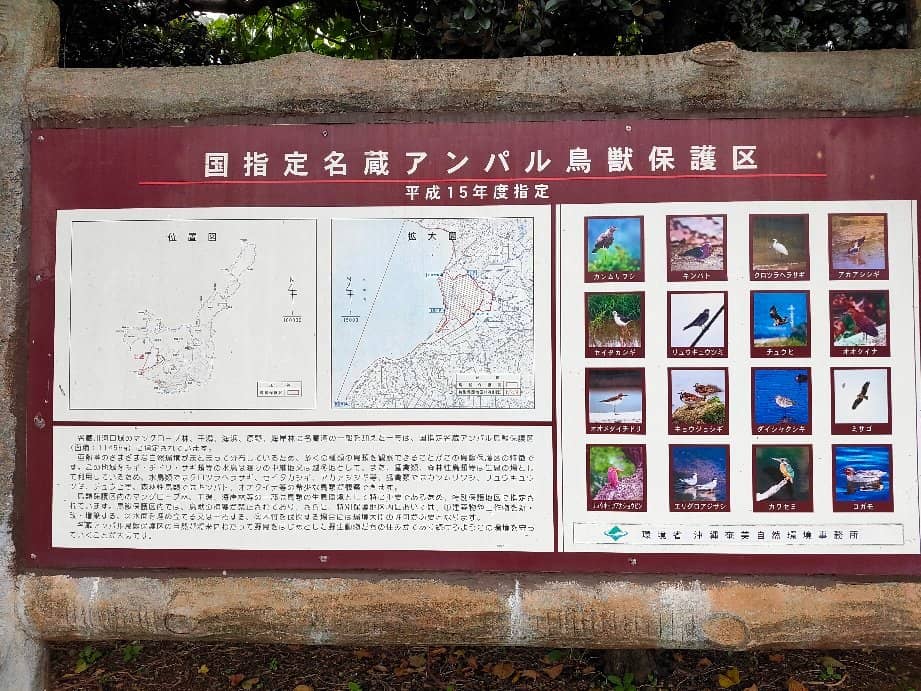
Nagura Amparu Wetland
A pristine Ramsar Convention wetland on Ishigaki Island, offering rich biodiversity, mangrove forests, and vibrant tidal flats.

Highlights
Must-see attractions

Social
From TikTok & Reddit
Best Time
Exposes rich tidal flats

Nagura Amparu Wetland
Best Time
Exposes rich tidal flats

Highlights
Must-see attractions
A pristine Ramsar Convention wetland on Ishigaki Island, offering rich biodiversity, mangrove forests, and vibrant tidal flats.
"A treasure trove of wetlands, right up close to nature, perfect for observation and photography. "

🎯 Wear Amphibious Shoes
Essential for exploring the natural wetland; shorts are also recommended!
🗺️ Use the East Side Entrance
Easier access to the wetland, avoiding a steep slope.

Highlights
Discover the most iconic attractions and experiences
Tidal Flat Exploration
Nagura Amparu Wetland
Discover a natural aquarium teeming with hermit crabs, fish, and mantis shrimp during low tide.
Mangrove Forest Walk
Nagura Amparu Wetland
Stroll through diverse mangrove species and enjoy the peaceful, untouched nature of Ishigaki Island.
Birdwatching Spectacle
Nagura Amparu Wetland
Witness birds of prey and migratory waterfowl in their natural habitat – a truly unforgettable sight.
Plans like a pro.
Thinks like you
Planning Your Visit
Embrace the Tides for the Best Experience
Dress for Nature's Embrace
Best Times
Insider Tips
from TikTok, Instagram & Reddit
🎯 Wear Amphibious Shoes
Essential for exploring the natural wetland; shorts are also recommended!
🗺️ Use the East Side Entrance
Easier access to the wetland, avoiding a steep slope.
📸 Perfect for Photographers
Capture stunning reflections at high tide and intricate details at low tide.
☀️ Beat the Midday Sun
Visit early morning or late afternoon to avoid intense heat and sunlight.
Tips
from all over the internet
🎯 Wear Amphibious Shoes
Essential for exploring the natural wetland; shorts are also recommended!
🗺️ Use the East Side Entrance
Easier access to the wetland, avoiding a steep slope.
📸 Perfect for Photographers
Capture stunning reflections at high tide and intricate details at low tide.
☀️ Beat the Midday Sun
Visit early morning or late afternoon to avoid intense heat and sunlight.
What Travellers Say
Reviews Summary
Visitors rave about Nagura Amparu Wetland as a pristine natural escape, highlighting its rich biodiversity and serene atmosphere. The opportunity to explore tidal flats teeming with life and walk through mangrove forests is a major draw. While not a flashy attraction, its untouched beauty offers a deeply rewarding experience for nature enthusiasts and photographers alike.
"Kids loved sea creature hunting here."
Masa Aoki
"A treasure trove of wetlands, right up close to nature 🦀🐟🦐🦎🌱
We strongly recommend wearing shorts and amphibious shoes! This isn't a fenced-off viewing point, but a natural wetland you can actually walk into. The mangroves are incredibly diverse: hermit crabs, fish, crabs, mantis shrimp, and lizards are all readily available, and the scenery is truly breathtaking.
Tip: The entrance is diagonally across from the parking lot, so you don't have to brave the steep slope up there. The flat path across the way leads to the beach, and then all the way to the mangroves.
The biggest surprise was seeing a bird of prey up close 🦅✨ They suddenly appeared out of the water, hunting for prey. It was truly an unforgettable experience 😍"
Ling Wong
"Nagura Anpal is a healing spot that you should definitely stop by when you come to Ishigaki Island! The nature of the mangroves and tidal flats remains intact here, creating an indescribably peaceful atmosphere. Especially if you go during low tide, you'll see a wide tidal flat, filled with crabs, shellfish, and sometimes small fish, making it feel like a natural aquarium!
The way the water flows through the mangroves is beautiful and perfect for a relaxing walk. Highly recommended for people who like observation and photography. At high tide, the scenery becomes completely different, and one of the highlights is that the water surface shines like a mirror.
It's great to see the whole thing from the top of the bridge, but if you have time, stop for a while and enjoy the changes in the tidal flats! It's not a flashy tourist spot, but it's a perfect place to feel the nature of Ishigaki 🌿"
Masahiro Hamanaka (BlueHAMA)
What People Like
What People Dislike
Frequently Asked Questions
🚇 🗺️ Getting There
Nagura Amparu Wetland is located on the west coast of Ishigaki Island. You can reach it by car or taxi from Ishigaki Port. The drive takes approximately 20-30 minutes. There is a small parking lot available on the east side of the road, near the north end of Nagura Ohashi Bridge.
Public bus services might be available, but they can be infrequent. Renting a car or using a taxi is generally the most convenient way to access the wetland. Check local bus schedules for the most up-to-date information.
The entrance is diagonally across from the parking lot, leading to the wetland. Alternatively, a flat path across the way leads to the beach and then to the mangroves.
While it's a significant natural site, it's best experienced as part of an Ishigaki Island itinerary. Day trips from other islands might not allow enough time to fully appreciate the wetland's nuances.
While not as common as for other attractions, some local tour operators on Ishigaki Island may offer nature observation or birdwatching tours that include the wetland. It's worth inquiring locally.
🎫 🎫 Tickets & Entry
Nagura Amparu Wetland is a natural protected area and generally does not require an entrance fee. You can explore the tidal flats and mangrove areas freely.
As a natural wetland, there are no strict operating hours. However, it's best to visit during daylight hours for safety and to fully appreciate the environment. Early morning and late afternoon are often recommended.
The parking lot near the Nagura Ohashi Bridge is typically free to use. However, it is small and can fill up quickly, especially during peak seasons.
As a Ramsar Convention wetland and part of Iriomote-Ishigaki National Park, visitors are expected to respect the natural environment. Avoid disturbing wildlife, leaving no trace, and staying on designated paths where available.
Yes, the wetland can be visited year-round. However, the experience might vary. Early June can be very hot, and visiting in the evening is suggested. The presence of migratory birds also changes with the seasons.
🎫 🧭 Onsite Experience
You can spot a diverse range of wildlife, including hermit crabs, various fish species, crabs, mantis shrimp, lizards, and numerous species of waterfowl and birds of prey.
Nature observation, birdwatching, photography, and simply enjoying a peaceful walk are highly recommended. Some sources mention stand-up paddleboarding (SUP) and kayaking as potential activities.
It is generally safe if you wear appropriate footwear and are mindful of the terrain. The wetland is a natural environment, so be cautious of slippery surfaces and uneven ground.
Early mornings and late afternoons are often best for wildlife viewing, as animals are typically more active during these cooler parts of the day. Low tide also reveals more of the tidal flat creatures.
Facilities are minimal as it's a natural area. There are no shops or extensive facilities directly at the wetland. It's advisable to bring your own water and snacks.
📸 📸 Photography
The Nagura Ohashi Bridge offers a great vantage point to see the entire tidal flat and mangrove forest. Walking along the paths during low tide allows for close-up shots of wildlife.
Macro photography for small creatures, landscape photography for the expansive tidal flats and mangroves, and wildlife photography, especially for birds, are excellent choices.
The 'golden hours' around sunrise and sunset offer beautiful lighting. High tide can create stunning mirror-like reflections, while low tide provides opportunities for detailed shots of the exposed seabed.
A tripod can be beneficial for capturing sharp images, especially in lower light conditions during early mornings or late afternoons, and for long exposures if you're aiming for smooth water effects.
Focus on the diverse marine life exposed at low tide, the intricate patterns of the mangrove roots, and the various bird species that inhabit the area.
For Different Travelers
Tailored advice for your travel style
👨👩👧 Families with Kids
While there aren't specific playgrounds, the sheer wonder of observing wildlife in its natural habitat is entertainment enough. The relatively flat paths and accessible tidal areas make it manageable for families. It's a great place to foster a love for nature and conservation in young minds. Pack plenty of water and snacks, as facilities are limited.
📸 Photography Enthusiasts
During high tide, the calm waters create breathtaking reflections, perfect for landscape shots that capture the serene beauty of the area. The golden hours around sunrise and sunset provide soft, warm light ideal for atmospheric photography. Birdwatchers will also find ample opportunities to capture images of waterfowl and birds of prey in their natural environment. A tripod can be very useful for capturing sharp images, especially in varying light conditions.
🌿 Nature Lovers & Birdwatchers
Visitors can spend hours observing the natural behaviors of birds, from waterfowl foraging in the shallows to birds of prey hunting. The peaceful atmosphere of the wetland, especially during the quieter hours of the day, allows for an immersive experience in nature. It's a place to disconnect from the hustle and bustle and reconnect with the natural world.
Deep Dives
In-depth insights and expert knowledge
The Ecological Significance of Nagura Amparu Wetland
The mangrove species found here, including Bruguiera gigantea, Rhizophora mucronata, Kandelia obovata, and Avicennia marina, are essential for coastal protection and serve as nurseries for marine life. The tidal flats, exposed during low tide, are a feeding ground for numerous invertebrates like shrimp and crabs, some of which are endemic or rare. This rich ecosystem also makes the wetland a critical stopover and wintering ground for many migratory waterfowl, attracting birdwatchers from afar.
Beyond its ecological value, the wetland is also culturally significant, being the setting for the local folk song "Amiharinu Metaka Crab (Midagarama Yunta)." This blend of natural beauty, biodiversity, and cultural heritage makes Nagura Amparu Wetland a place of profound importance and a must-visit for nature enthusiasts.
Experiencing the Wetland: From Tides to Trails
Conversely, high tide presents a different, equally captivating scene. The water surface becomes calm and reflective, creating a mirror-like effect that enhances the serene beauty of the mangroves. This is perfect for peaceful contemplation and landscape photography. While the wetland is a natural environment and not a manicured park, visitors can walk into the mangroves and tidal areas, making appropriate footwear like amphibious shoes and shorts highly recommended.
For those seeking a more active experience, activities like stand-up paddleboarding (SUP) and kayaking are sometimes available, offering a unique perspective of the wetland from the water. Regardless of how you choose to explore, the intact nature of the mangroves and tidal flats provides an authentic connection to Ishigaki's natural landscape, offering a truly healing and unforgettable experience.





Social
from TikTok, Instagram & Reddit